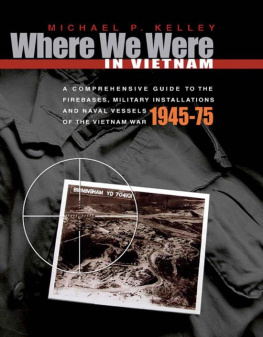All rights reserved, including the right to reproduce this book or portions thereof in any form or by any means, electronic or mechanical, including photocopying, recording, or by any information storage or retrieval system, without permission in writing from the publisher. All inquiries should be addressed to Stackpole Books, 5067 Ritter Road, Mechanicsburg, Pennsylvania 17055.
Cover design by Wendy A. Reynolds
Cragg, Dan.
Guide to military installations / Dan Cragg.6th ed.
p. cm.
Includes index.
ISBN 0-8117-2781-5 (alk. paper)
1. Military bases, AmericanDirectories. 2. United StatesArmed
ForcesFacilitiesDirectories. I. Title.
The National War College at Fort McNair in Washington, D.C. U.S. ARMY PHOTO
Preface
Welcome to the sixth edition of Guide to Military Installations.
What a difference a decade makes. When ten years ago we started work on the third edition of this guide, the world was a much different place than it is today. Back in 1991, the units that had fought in the recently concluded Gulf War were on the verge of redeployment to their home stations and the troop reductions in Europe were just getting started. In 1991, the Department of Defense had 1.9 million men and women under arms: 710,000 Army, 570,000 Navy, 194,000 Marine Corps, and 510,000 Air Force. Today that force is down to 1.3 million: 479,000 Army, 373,000 Navy, 172,000 Marine Corps, and 360,000 Air Force.
Of todays force, 1,132,000 are deployed in the United States and its territories, while the remaining 252,000 personnel are deployed overseas, afloat (45,000) and ashore, in a total of 139 different countries. By far the largest overseas deployment is still in Germany, with 65,000 personnel, 50,000 of whom are Army. This is down from over 200,000 in 1991. Next is Japan with 40,000 personnel (5,800 Air Force, 19,000 Marines, and 13,000 Navy) followed by Korea with 35,000 (26,000 Army).
Totally unforeseen a decade ago was the deployment of American troops to the Balkans in 1995. Today the 5,800 American military personnel still in Bosnia-Herzgovina have taken on the mantle of a semipermanent garrison. Interestingly, at press time the plan to replace troops in the Balkans on a rotational basis through 2001 includes significant numbers of reserve component personnel, principally members of the Texas Army National Guards 49th Armored Division, Virginias 29th Infantry Division, and Pennsylvanias 28th Infantry Division. Separate units from Georgia, Indiana, Mississippi, North Carolina, and Oklahoma are scheduled to participate. This will represent the largest overseas deployment of reserve personnel since the Gulf War.
So the contribution of the 1.35 million men and women in the reserve components to our national defense is vital. This is not to discount the more than 700,000 Department of Defense civilian employees, all of whom are important members of the military communities described in this guide.
On 31 December, 1999, the United States officially withdrew from the storied Panama Canal Zone, ending nearly a century of operations there.
This guide was compiled from unclassified materials, most of which were obtained directly from the installations. The author and the publisher strive to make this guide as complete as possible; any installations not included here either have very small military populations or chose not to participate. In this new release of the guide, we have striven to include more remote and temporary locations. We have also provided, where available, the addresses of the World Wide Websites established at various installations. The user should understand, however, that information in that medium frequently changes its location within the web or is discontinued without notice.











